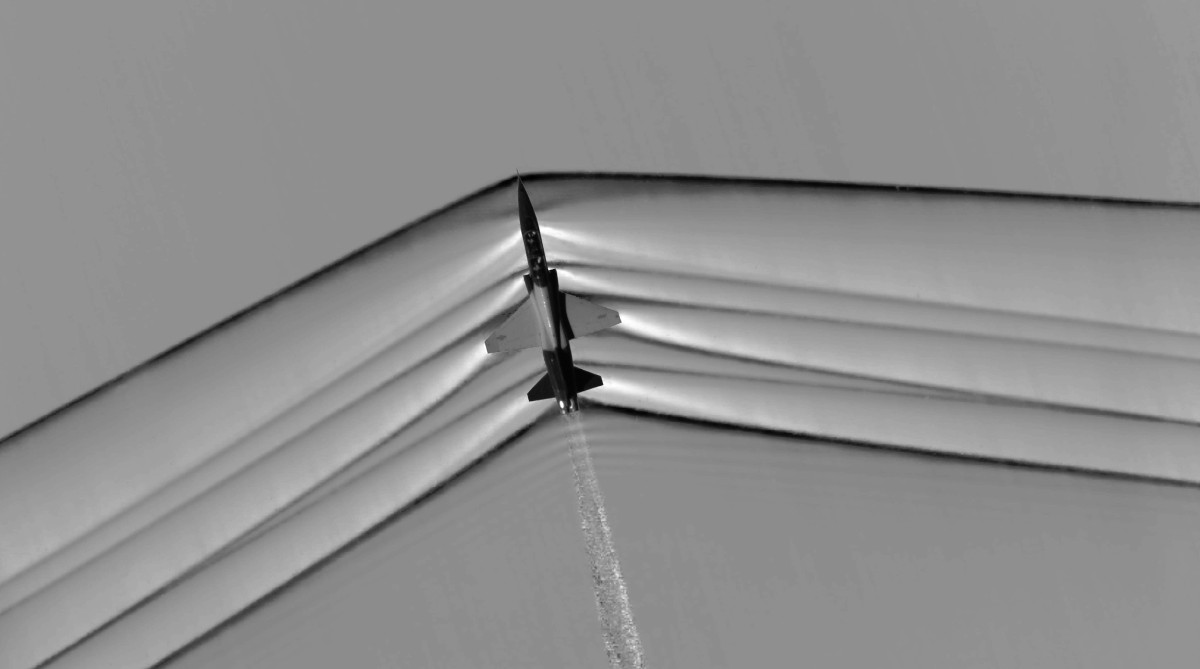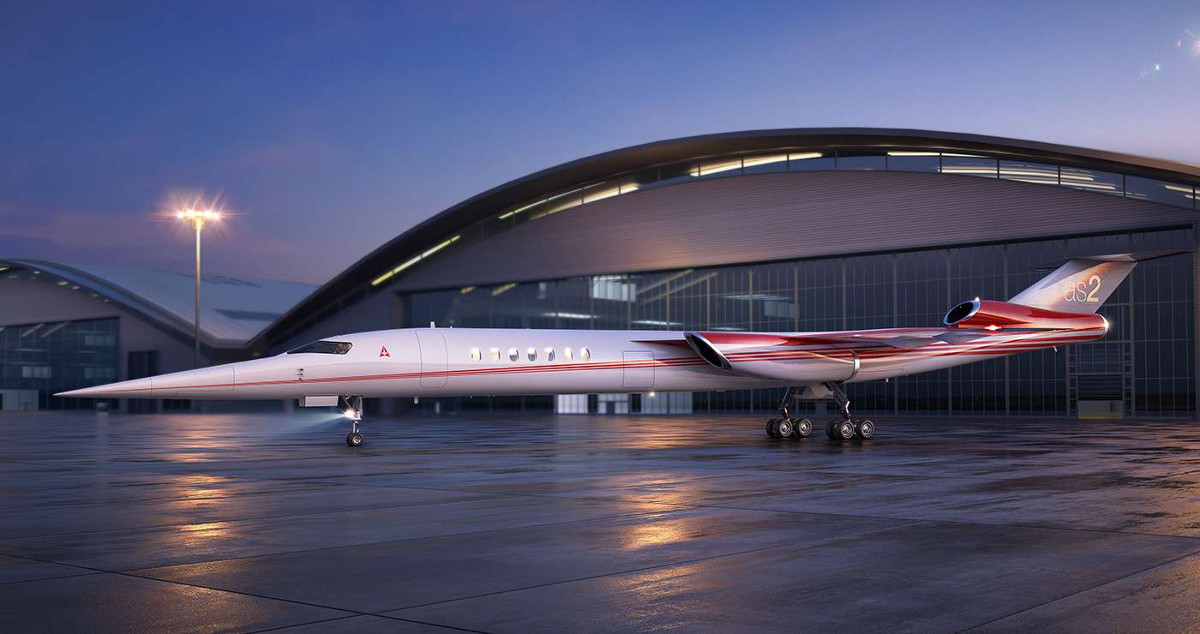A new video from National Aeronautics and Space Administration offers a look at what the cockpit on Lockheed Martin’s still-in-development X-59A Quiet Supersonic Transport test bed, or QueSST, might look like. Due to the nature of the design, the pilot will use high-resolution video cameras to “see” forward through the front of the fuselage, which could become a more common design element on future manned commercial and military high-speed aircraft.
NASA released the footage on YouTube on Aug. 23, 2018, as part of a larger video presentation about the progress of the overall Low-Boom Flight Demonstration (LBFD) program. At present, the goal is for the X-59A to make its first flight in 2021, after which it will undergo around a year of extensive “Phase 1” flight testing. During phases 2 and 3, which are set to run between the end of 2022 and the end of 2023, scientists and engineers will examine just how well the aircraft’s design mitigates the impact of sonic booms and then survey the public about whether or not they feel the plane produces an acceptable amount of noise.
“Right now, when it comes to sonic boom overland flight, it’s [the Federal Aviation Administration regulations] based on just a speed. Right now, it is for civil aircraft, thou shall not go over Mach 1 [the speed of sound],” David Nils Larson, NASA’s chief test pilot at the Armstrong Flight Research Center, which is situated within Edwards Air Force Base in California, said in the new video. “What we want to do, is we want to change that regulation and base it on the noise and not on just an arbitrary speed.”
Footage showing a mockup of the X-59A’s cockpit design appears starting at around the 2:10 mark in the video below.

The X-59A’s planform is designed to turn a sonic boom, which is both extremely loud and can sends out a shockwave that can physical cause damage, into more of a “sonic thump.” Specifically, the plane will hopefully be able to fly at a speed of Mach 1.4 and an altitude of 55,000 feet with individuals on the ground experiencing something akin to an extra “heartbeat.”
In a typical aircraft design, shockwaves begin to bunch up behind the plane as it reaches transonic speeds near the speed of sound. As it breaks the sound barrier, the supersonic shockwaves smack into each other, creating the sonic boom.
The X-59A’s shape, based on decades of previous research into the formation of sonic booms, is supposed to send those waves into different directions to prevent them from hitting each other. This, in turn, mitigates the resulting noise and physical impact.
The video below includes footage of a NASA F/A-18 Hornet producing sonic booms during a public event in 2018.

“Instead of getting a loud boom-boom, you’re going to get at least two quiet thump-thump sounds,” Ed Haering, an engineer at the Armstrong Flight Research Center, said in an official interview earlier in 2018. That’s “if you even hear them at all,” he added.
The problem is that creating the right shape has made it impossible to include a traditional front windscreen on the QueSST. The pilot will have an extremely limited ability to see out to the side and rear, as well.

“There’s a big bunch of the field that would be blocked by the nose itself,” Nils Larson, the NASA test pilot, explained in the LBFD program video. “Well, the FVS [forward vision system] camera’s on the bottom, so they can actually kind of fill in that whole picture and make it look like I don’t have a nose on the airplane at all.”
It’s important to note that many commercial and private jet aircraft have enhanced flight vision systems, also known as EFVS or EVS, that incorporate a front-mounted camera to improve situational awareness. However, none of them replace the windscreen entirely.
When it comes to supersonic aircraft, the size and shape of the nose has long been an issue in general, regardless of any attempts to reduce the impact of sonic booms, too. The Anglo-French Concorde and Soviet Tu-144 supersonic airliners both featured complicated articulating nose cones that would “droop” and a “visor windowed fairing would lower during takeoff and landing to give pilots adequate downward visibility.
Ultra-high speed military aircraft, such as Lockheed’s SR-71, have also notably had limited visibility, which adds to the challenges of flying them. It’s not surprising that plans for future supersonic and hypersonic intelligence gathering platforms have been increasingly trending toward unmanned or pilot-optional configurations.

For any supersonic aircraft design that doesn’t seek to remove the pilot from the cockpit entirely, a high-resolution camera system would offer a simpler way to provide an adequate field of vision than any sort of articulating fuselage. It could also allow designers to make it easier for pilots to “see” in any direction without potentially having to compromise the aircraft’s aerodynamics or sonic boom mitigation qualities.
However, relying on a single camera for the X-59A’s forward vision could create a lack of depth perception that might make the aircraft differently complicated to fly. A possible solution to that issue might be to employ a more comprehensive three-dimensional augmented vision system, such as the one found on the F-35 Joint Strike Fighter.
Still, if the X-59A’s final configuration proves to be both workable and practical, it could easily inform any future manned supersonic aircraft designs for both commercial and military applications. In December 2017, Lockheed Martin teamed up with the Aerion Corporation to continue development of the latter firm’s AS2 supersonic business jet.
At present, the AS2 has a relatively traditional design with an elongated nose. Aerion also says that its plan is for the aircraft to cruise at a transonic speed just below Mach 1, to avoid sonic booms entirely. “Depending on atmospheric conditions, principally temperature and wind,” the plane might be able to get up to Mach 1.2 without causing any disruptions, according to the company’s website.

Using lessons learned from the X-59A, including the nose shape and camera system from the pilots, it might be possible for the two partners to refine this design to reach higher speeds without the noise. The AS2 already has a host of potential military applications, which we at The War Zone have examined in detail here, and the revised planform might make it more effective and discreet, at least compared to traditional aircraft flying at supersonic speeds, in many of those roles.
“Once we clear the way for a new regulation, then, basically, aircraft manufacturers can say ‘hey, if I can build to that regulation, I can go build a whole new class of aircraft that’ll get people … from point A to point B twice as fast,” NASA test pilot Nils Larson noted in the video presentation. “When you look at it [the X-59A], you’re looking and going ‘hey, this is that future we were promised 30 or 40 years ago.”
It will definitely be exciting to see where the QueSST concept and NASA’s LBFD program lead future aircraft designs regardless. Depending on how the project goes, we may not have to wait much longer for a new class of practical supersonic aircraft piloted by crews who can’t actually see out of the front of the plane.
Contact the author: jtrevithickpr@gmail.com
